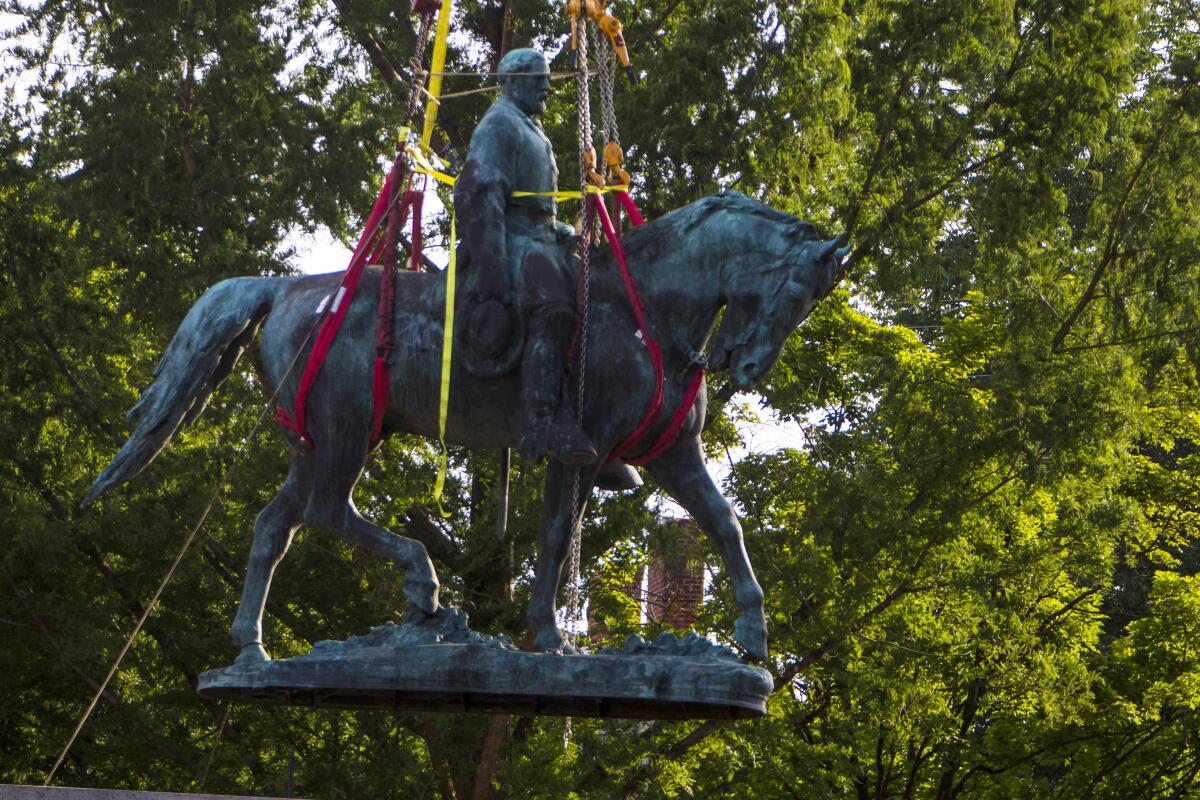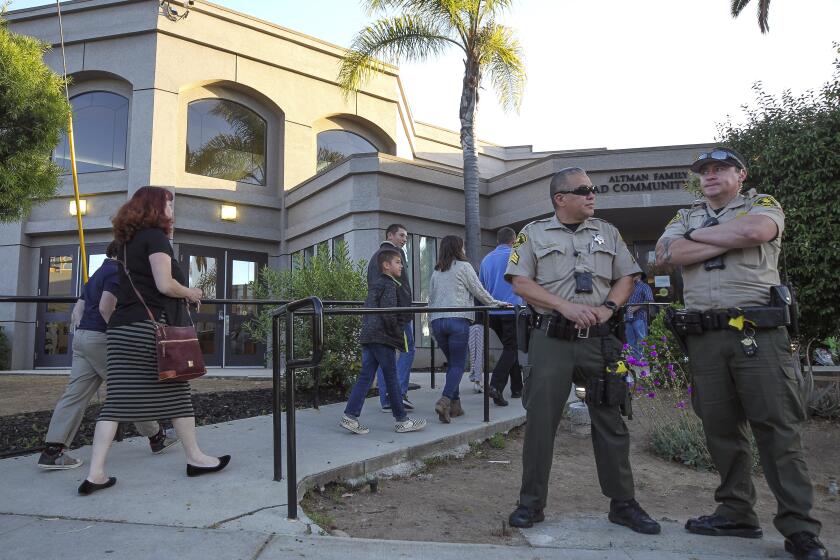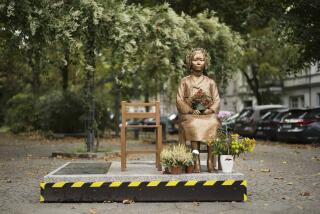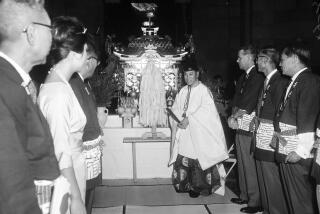Robert E. Lee statue removed in Charlottesville after years of contention

- Share via
CHARLOTTESVILLE, Va. — A statue of Confederate Gen. Robert E. Lee was hoisted away from its place of prominence in Charlottesville on Saturday and carted off to storage, years after its threatened removal became a rallying point for white supremacists and inspired their violent 2017 rally that left a woman dead and dozens injured.
Work to remove the statue began early Saturday morning. Crews later removed a statue of Confederate Gen. Thomas “Stonewall” Jackson and a statue depicting Sacagawea and explorers Meriwether Lewis and William Clark. The latter piece had been criticized for a depiction of the Shoshone guide and interpreter that some viewed as subservient and weak.
Scores of spectators lined the blocks surrounding the park where the Lee statue had stood since the 1920s, and a cheer went up as it was lifted off its pedestal. There was a visible police presence, with fencing and heavy trucks blocking off vehicular traffic on the streets.
“Taking down this statue is one small step closer to the goal of helping Charlottesville, Va., and America, grapple with the sin of being willing to destroy Black people for economic gain,” Charlottesville Mayor Nikuyah Walker said in a speech to reporters and observers as the crane neared the monument.
A California judge decided that victims of the 2019 synagogue shooting near San Diego that killed one worshiper and wounded three can sue the manufacturer of the semiautomatic rifle used in the attack and the gun shop that sold the weapon.
The removal of the statues follows years of contention, community anguish and litigation. A long legal fight and changes in a state law that protected war memorials had held up the removal for years.
Saturday’s work also came nearly four years after violence erupted at the infamous “Unite the Right” rally in Charlottesville. Heather Heyer was killed when an Ohio man in town for the rally intentionally drove his car into a crowd of peaceful counterprotesters. The violence sparked a national debate over racial equity, further inflamed by former President Trump’s insistence that there was blame “on both sides.”
The statue removal proceeded smoothly as couples, families with small children and activists looked on from surrounding blocks. The crowd intermittently chanted and cheered as the workers made progress. Music wafted down the street as a pair of musicians played hymns from a nearby church.
There were some opponents of the removal, including a man who heckled the mayor after her speech, but no visible, organized protester presence.
Ralph Dixon, a 59-year-old Black man born and raised in Charlottesville, documented the removal work Saturday morning with his camera.
Dixon said that as a child, he was brought to the park where the Lee statue stood.
“All the teachers, my teachers anyway, were always talking about what a great person this was,” he said.
He said his understanding of Lee’s legacy and the statue’s message evolved as he became an adult. He said that it was important to consider the context of the Jim Crow era during which the statue was erected, and that there was no reason the statue should stay, especially after Heyer’s death.
“It needed to be done,” he said.
The statues will be stored in a secure location until the City Council decides what should be done with them. Under state law, the city was required to solicit parties interested in taking the statues during an offer period that ended Thursday. It received 10 responses.
A coalition of activists commended the city for moving quickly to take the statues down after the offer period ended. As long as the statues “remain standing in our downtown public spaces, they signal that our community tolerated white supremacy and the Lost Cause these generals fought for,” the coalition called Take ’Em Down Cville said.
Jim Henson of nearby Barboursville said Saturday he came to witness what he called a historic event. He said he didn’t have a strong opinion on Confederate monuments but thought Charlottesville was happy to see the saga come to an end.
“Good atmosphere, good vibes, good energy,” he said.
The most recent push to remove the Lee monument began in 2016, thanks in part to a petition started by a Black high school student, Zyahna Bryant.
“This is well overdue,” said Bryant, now a student at the University of Virginia.
“No platform for white supremacy. No platform for racism. No platform for hate.”
Kristin Szakos, a former Charlottesville City Council member who watched the statues’ removal, said that “folks in this community have been trying to get these statues down for a hundred years.”
She added: “I think that we’re finally ready to be a community that doesn’t telegraph through our public art that we are pretty fine with white supremacy.”
More to Read
Sign up for Essential California
The most important California stories and recommendations in your inbox every morning.
You may occasionally receive promotional content from the Los Angeles Times.











